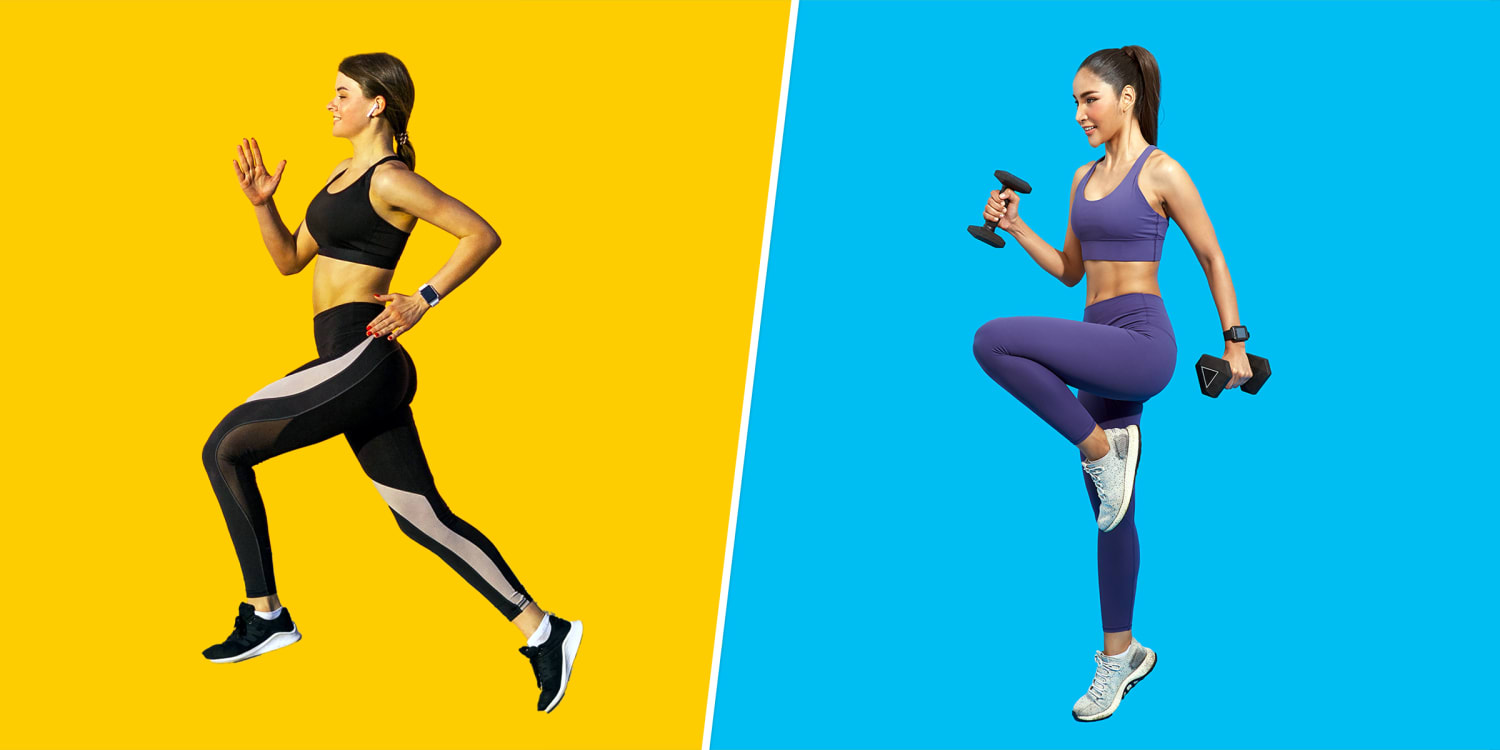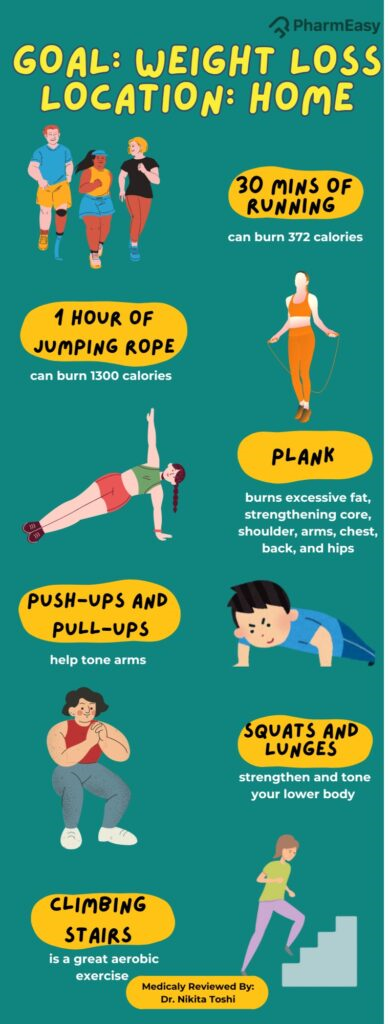Are you wondering how much time you really need to spend exercising each day to lose weight? You’re not alone.
Finding the right balance between workouts and daily life can feel confusing. But what if there was a simple answer that fits your schedule and helps you see real results? You’ll discover exactly how long you should exercise daily to burn fat effectively—without wasting time or feeling overwhelmed.
Keep reading, because your ideal workout plan might be easier than you think.
Daily Exercise Duration For Weight Loss
Exercise helps burn calories and lose weight. The time you spend exercising each day matters a lot.
Finding the right daily exercise duration can improve your weight loss results.
Recommended Timeframes
Experts suggest exercising for at least 30 minutes daily for weight loss. This can include walking, running, or other activities.
If you want faster results, increase exercise to 45-60 minutes a day. This helps burn more calories.
- 30 minutes daily for beginners
- 45 to 60 minutes daily for faster weight loss
- Include both cardio and strength training
Factors Influencing Duration
Your age, fitness level, and diet affect how long you should exercise. Some people need more or less time.
Exercise intensity also changes the needed time. Higher intensity can mean shorter workouts.
- Older adults may start with less time
- Beginners should build up gradually
- More intense workouts can be shorter
- Diet quality impacts weight loss success
Balancing Exercise And Rest
Rest days are important to avoid injury and let your body recover. Too much exercise without rest can cause problems.
Aim to exercise most days but include 1-2 rest days each week. Rest helps maintain long-term progress.
- Exercise 5-6 days per week
- Take 1-2 days of rest or light activity
- Listen to your body to avoid burnout
Types Of Exercise For Fat Burning
Exercise helps burn fat and lose weight effectively. Different types of exercise target fat loss in unique ways.
Choosing the right exercise can improve how fast you see results. Let’s explore three main types of fat-burning workouts.
Cardio Workouts
Cardio workouts increase your heart rate and breathing. They help burn calories and fat during the activity.
Examples include running, cycling, swimming, and brisk walking. These activities can last from 30 to 60 minutes daily.
- Boosts overall calorie burn
- Improves heart and lung health
- Easy to adjust intensity
Strength Training
Strength training builds muscle by using weights or resistance. Muscle burns more calories even at rest.
Workouts include lifting weights, bodyweight exercises, and resistance bands. Aim for 2-3 sessions per week.
- Increases muscle mass
- Raises metabolism long-term
- Shapes and tones the body
High-intensity Interval Training
HIIT mixes short bursts of intense exercise with rest periods. It burns a lot of calories fast.
Sessions can last 15 to 30 minutes. It combines cardio and strength moves for effective fat loss.
- Boosts calorie burn after exercise
- Improves fitness quickly
- Can be done anywhere
Exercise Intensity And Weight Loss
Exercise helps you burn calories and lose weight. The intensity of your workout affects how many calories you burn.
Choosing the right intensity can help you reach your weight loss goals faster.
Moderate Vs. Vigorous Intensity
Moderate intensity means you work hard but can still talk. Vigorous intensity means you work very hard and can only say a few words.
Both types help you burn calories, but vigorous workouts burn more in less time.
- Moderate: brisk walking, light cycling
- Vigorous: running, fast swimming
- Moderate lasts longer to burn calories
- Vigorous burns more calories quickly
Measuring Workout Intensity
You can measure intensity by heart rate or how hard you feel you are working. This helps track your effort during exercise.
Use a simple scale from 1 to 10. Moderate is about 5 or 6, vigorous is 7 or above.
- Heart rate: 50-70% of max for moderate
- Heart rate: 70-85% of max for vigorous
- Perceived effort: moderate feels like moderate effort
- Perceived effort: vigorous feels hard to very hard
Impact On Metabolism
Vigorous exercise raises your metabolism more than moderate exercise. This means you burn more calories even after you stop.
Moderate exercise also helps, but the effect is smaller and shorter.
- Vigorous exercise increases calorie burn after workout
- Moderate exercise burns calories mostly during activity
- Higher intensity improves fitness faster
- Both types support weight loss with consistent effort

Incorporating Exercise Into Daily Life
Exercise helps with weight loss and improves health. Finding time daily can be hard but is very important.
Adding workouts into your routine makes it easier to stay active and lose weight over time.
Scheduling Workouts
Plan your workouts like appointments. Set a specific time each day to exercise.
Morning or evening sessions work well. Pick times when you feel most energetic.
- Use a calendar or app to remind you
- Start with short sessions, then increase time
- Choose activities you enjoy to stay motivated
Staying Consistent
Exercise daily to create a habit. Consistency helps your body adapt and burn fat.
Set small goals and track your progress. Reward yourself for meeting exercise targets.
- Exercise at the same time daily
- Mix workouts to avoid boredom
- Find a workout partner for support
Overcoming Common Barriers
Many people face challenges like lack of time or low energy. Find ways to manage these issues.
Break workouts into short sessions if you are busy. Use active breaks during the day.
- Prepare workout clothes ahead of time
- Choose exercises that fit your fitness level
- Stay positive and focus on progress
Nutrition’s Role In Weight Loss
Eating the right foods helps you lose weight faster. Exercise burns calories, but nutrition controls how many calories you eat.
Good nutrition gives your body energy for exercise. It also helps your muscles recover and grow stronger.
Balancing Calories
To lose weight, you need to burn more calories than you eat. This is called a calorie deficit. You can create it by eating less or moving more.
Track your calorie intake and exercise to find the right balance. Eating too few calories can slow your metabolism and harm your health.
- Calculate your daily calorie needs
- Eat slightly fewer calories than you burn
- Include a mix of protein, carbs, and fats
- Avoid very low-calorie diets
Pre- And Post-workout Meals
Eating before exercise gives you energy to work harder. Choose light meals with carbs and some protein about an hour before.
After exercise, your body needs protein to repair muscles. Include carbs to refill your energy stores. Eat within two hours of working out.
- Pre-workout: banana, yogurt, or toast with peanut butter
- Post-workout: chicken breast, rice, and vegetables
- Drink water before and after exercise
Hydration Tips
Water helps your body burn fat and keeps you strong during workouts. Drink water throughout the day, not just when you feel thirsty.
Drink extra water before, during, and after exercise. Avoid sugary drinks that add calories but not nutrition.
- Carry a water bottle with you
- Drink 8-10 glasses of water daily
- Increase water intake on hot days or long workouts
Tracking Progress And Adjusting Plans
Tracking your progress helps you see if your exercise plan works. It shows what to change to keep losing weight.
Adjusting your plan keeps your body challenged. This helps you avoid plateaus and stay motivated.
Monitoring Weight And Measurements
Weigh yourself regularly to track changes. Use the same scale and time of day for accuracy.
Measure waist, hips, and other areas. Sometimes inches lost show progress better than weight.
- Weigh yourself once or twice a week.
- Record measurements every two weeks.
- Track trends, not daily changes.
Adapting Exercise Routines
Change your workouts if progress slows. Add new exercises or increase intensity to burn more calories.
Mix cardio and strength training. This helps build muscle and boosts metabolism for weight loss.
- Try different activities like cycling or swimming.
- Increase workout time or speed gradually.
- Include rest days to avoid burnout.
Using Technology And Apps
Use apps to log workouts and food. This helps you stay on track and see your progress clearly.
Wearable devices track steps, heart rate, and calories burned. They provide useful data to adjust your plan.
- Choose apps that fit your goals and lifestyle.
- Set reminders to exercise daily.
- Review data weekly to see trends.
Safety Tips For Daily Exercise
Exercising daily helps you lose weight and stay healthy. It is important to exercise safely to avoid injuries.
Following simple safety tips makes your workout effective and safe. Listen to your body and know your limits.
Avoiding Injury
Injuries can stop your progress and cause pain. Warm up before exercise and cool down after.
Use proper form and do not push too hard. Choose the right shoes and clothes for your workout.
- Start with low intensity and increase slowly
- Stretch gently before and after exercise
- Stay hydrated during your workout
- Take breaks if you feel tired
Listening To Your Body
Your body gives signals when something is wrong. Pay attention to pain, dizziness, or extreme tiredness.
Stop exercising if you feel sharp pain or severe discomfort. Rest and recover before trying again.
- Notice how you feel during and after exercise
- Do not ignore lasting soreness or pain
- Adjust your workout if you feel weak or dizzy
- Sleep well to help your body recover
When To Seek Professional Advice
Some health issues need expert guidance before starting exercise. Ask a doctor if you have chronic illness or injuries.
A fitness trainer can help create a safe and effective workout plan for your weight loss goals.
- Check with a doctor if you have heart or lung problems
- Get advice if you feel pain during exercise often
- Use a trainer to learn correct exercise techniques
- Follow professional tips to avoid injury and stay motivated


Frequently Asked Questions
How Many Minutes Of Exercise Burn Fat Effectively?
Aim for at least 150 minutes of moderate exercise weekly. That equals 30 minutes daily, five days a week. Consistency helps burn fat and improves metabolism. Include cardio and strength training for best results.
Can Short Workouts Help In Weight Loss?
Yes, short workouts like HIIT boost metabolism quickly. Even 10-15 minutes daily can aid fat burning. Intensity matters more than duration. Combine short bursts with regular activity for effective weight loss.
Is Daily Exercise Necessary To Lose Weight?
Daily exercise supports steady weight loss and better health. It helps maintain calorie deficit and boosts energy. However, rest days are important for recovery. Aim for at least 5 days of exercise per week.
What Type Of Exercise Burns The Most Calories?
Cardio workouts like running, cycling, and swimming burn the most calories. High-intensity interval training (HIIT) is also highly effective. Combining cardio with strength training maximizes fat loss and muscle tone.
Conclusion
To lose weight, daily exercise is key. Aim for 30 minutes each day. Consistency is more important than intensity. Find activities you enjoy, like walking or cycling. This makes sticking to your routine easier. Listen to your body and rest when needed.
Combine exercise with healthy eating for better results. Small changes make a big difference. Stay motivated and track your progress. Remember, patience is crucial. Weight loss takes time, but you can achieve it. Keep going. You’re on the right path.



